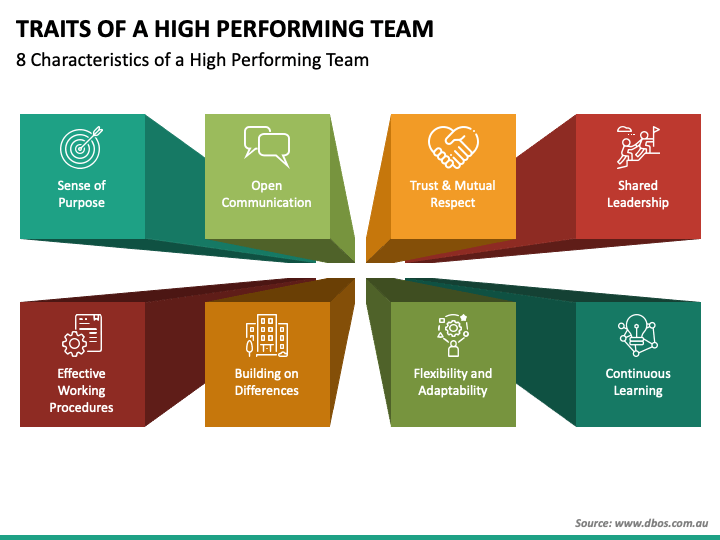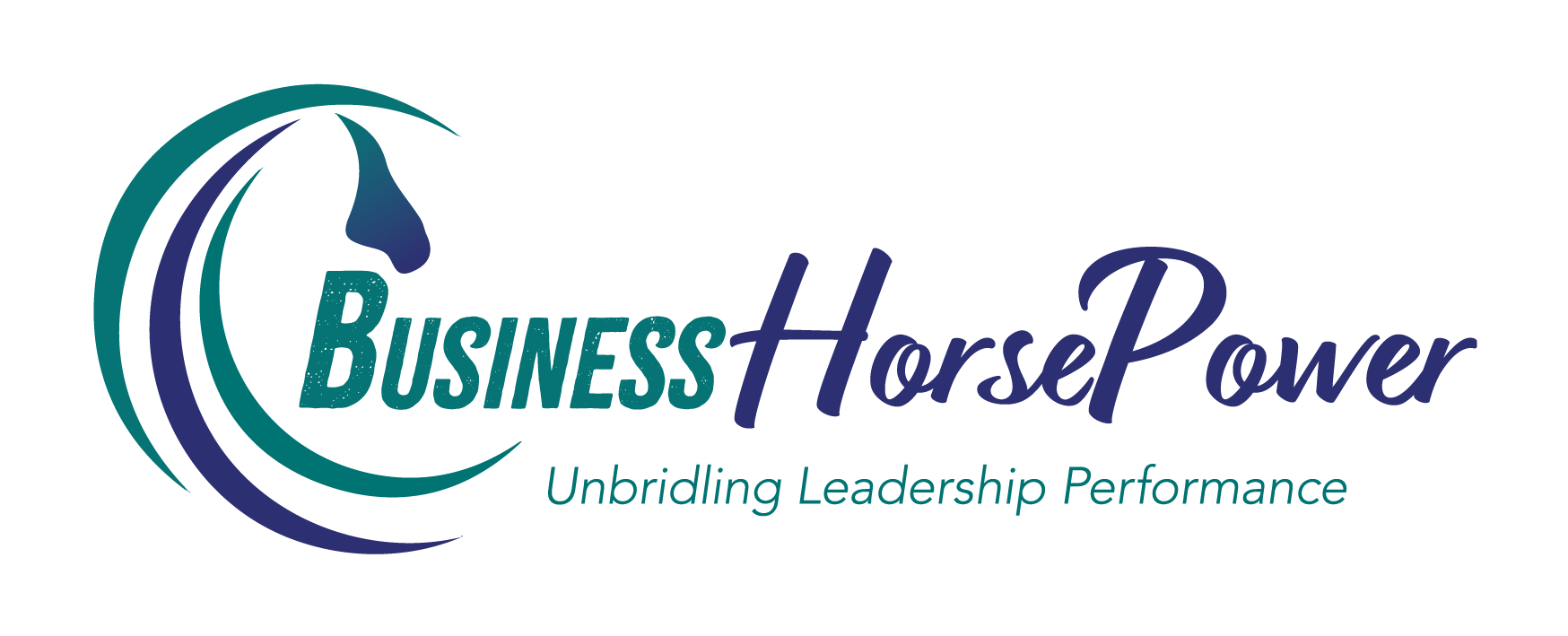
by Julia Felton | Feb 24, 2024
Teamwork is paramount to the success of any business and leaders need to understand that without every team member pulling together in the same direction (aka with the same purpose) then success is likely to be curtailed, maybe not in the short term but definitely over the longer term.
Whilst individuals play the game it is teams that win championships whether that is in the sports arena or on the business playing field. Teamwork remains the ultimate competitive advantage in business today, because it is so powerful and rare.
“Not Finance. Not Strategy. Not Technology. It is teamwork that remains the ultimate competitive advantage, both because it is so powerful and so rare” ‒ Patrick Lencioni
There are several benefits of being in a team and these include:
- Teams involve more people and therefore comprise more resources – time, ideas and energy – available than one individual would have
- Teams allow the leaders to maximise their potential and minimise their weaknesses
- Teams provide multiple perspectives on how to reach the goal, as each individual will see the problem in a different light. This allows for a creative flow of ideas, and the stumbling blocks that no one person might see can easily be navigated
- Teams share the credit for victories and the blame for losses. This fosters genuine humility and authentic communication
- Teams help keep leaders accountable for the goals
- Teams can simply do more than the individual
So why do business leaders fail to harness their teams for success and what are some of the myths we believe about teams. I believe there are five myths that keep many leaders stuck, not operating effectively.
Myth One: Teams are harmonious groups of people who compromise their needs for the sake of the group
Reality One: Good teams are made up of a diverse group of people with different perspectives and needs. When this diversity is recognised and embraced it becomes a real strength that can help the team overcome roadblocks that might derail a project.
So with this in mind it is important that within the team we identify the range of talents of all the team members and help team members understand the impact and contribution they can give to the team. Only then will team members feel engaged and motivated and want to actively participate.
Myth Two: Team conflict is unhealthy
Reality Two: Conflict can be healthy and should be harnessed for the common good, rather than suppressed.
Conflict is an energy source that when directed towards the team’s primary goal or mission can help create momentum and actually move a project forward. The challenge comes from the fact that many people dislike conflict and so suppress it. This creates frustration and a negative build-up of energy that ultimately can derail a project. Better the conflicting energy is surfaced and channelled in a positive way to come up with new ideas and approaches that help drive the project forward rather than derail it
Myth Three: Most people like teamwork
Reality Three: Whilst we often think that people enjoy working in teams, after all humans are social animals and we enjoy interaction with others, research by the Wright Consultancy discovered that only 33% of the working population enjoyed teamwork, 33% of the working population preferred working alone and solo, whilst the remaining 33% were pretty neutral as to their stance.
The challenge then for leaders is to know the drivers of the people in their teams and their preferred working style and then create roles that best leverage that person’s skills and method of working
Myth Four: Teams are easy to influence and manage
Reality Four: Leading and managing teams requires a different set of skills from that required for day-to-day management. This is because when you are leading teams you need to be able to inspire and motivate others. Also, you need to practice and understand the difference between delegation and empowerment, as teams work best when given direction and then allowed to decide how to reach that goal themselves. Micro-management hampers engagement and stops innovation as team members need to feel that the leader has their back and trusts them implicitly to do the job
Myth Five: Senior Leaders encourage teamwork
Reality Five: Most leaders are anxious about teamwork and the potential loss of power or control
A study of European managers in the 1990’s discovered that whilst senior leaders outwardly encouraged teamwork internally they were uncomfortable with the process and the potential for it exposing their own weaknesses and loss of control. This then often results in office politics with one team withholding resources from another in order to exert their authority.
Much of this thinking is driven by fear because great leaders realise they always need to hire people better than themselves so that their weaknesses can be mitigated for the ongoing success of the business. When leaders realise that it is results that matter and not their ego, they become more collaborative and work together across various aspects of the business to achieve success.
Nature understands the importance of teamwork and how everything is interdependent and synergistic. This is what drives unity and harmony in nature. So perhaps there is something we can learn from it and apply to our own efforts at improving teamwork, because as in the words of Simon Mainwaring
“Creating a better world requires teamwork, partnerships and collaboration, as we need an entire army of companies to work together to build a better world within the next few decades. This means corporations must embrace the benefit of co-operating with one another”
Julia Felton (aka The Business Wrangler) is the founder of Business HorsePower. Business leaders, entrepreneurs and executives hire her to accelerate their business performance by harnessing the energy of their people to work more collaboratively together. By aligning purpose with actions the team achieves exponential results as everyone starts pulling in the same direction.
Julia believes that business is a force for good and through designing purpose-driven businesses that leverage the laws of nature, and the herd, you can create businesses founded on the principles of connection, collaboration and community that make a significant impact in the world.

by Julia Felton | Feb 14, 2024
The recent England v Wales rugby game as part of the 2024 Six Nations Championship was a masterpiece in how The GC Index can be used to assess and develop high-performance teams.
England, with their Game Changer energy, set the tone early on with bold and inventive plays that kept Wales on the back foot. Their strategic approach, led by the Strategist energy, allowed them to anticipate Wales’ moves and exploit openings with precision.
Wales, however, demonstrated their resilience and adaptability, embodying the Play Maker archetype by orchestrating intricate manoeuvres, using the right players at the right moments to capitalise on fleeting opportunities. With their ability to read the game and make split-second decisions, Wales remained a formidable adversary throughout.
As the match progressed, both teams relied on their Polisher qualities to refine their execution and maintain momentum. England’s attention to detail and flawless execution bolstered their lead, while Wales’ commitment to perfecting their tactics kept them within striking distance.
In the crucial moments of the game, it was the Implementer energy that proved decisive. England’s disciplined approach and methodical game management secured them a hard-fought victory, as they meticulously executed their game plan to overcome Wales’ determined resistance.
In the end, England emerged triumphant in a closely contested encounter, showcasing the power of understanding and leveraging The GC Index proclivities to achieve success on the rugby field.
Reach out to me if you want to understand how you can use the GC Index to change the way you think about teams, performance, strategy and impact.
At Business HorsePower we use the GC Index with teams, individuals and organisations looking to maximise their impact and success.
Thanks to my mentor and The GC Index founder, Nathan Ott for the inspiration behind this.
#thegcindex #teamperformance #rugby #sixnations
Julia Felton (aka The Business Wrangler) is the founder of Business HorsePower. Business leaders, entrepreneurs and executives hire her to accelerate their business performance by harnessing the energy of their people to work more collaboratively together. By aligning purpose with actions the team achieves exponential results as everyone starts pulling in the same direction.
Julia believes that business is a force for good and through designing purpose-driven businesses that leverage the laws of nature, and the herd, you can create businesses founded on the principles of connection, collaboration and community that make a significant impact in the world.

by Julia Felton | Oct 10, 2023
In the fast-paced and ever-evolving landscape of today’s business world, a company’s success often hinges on the collective capabilities of its teams. As a business leader, you understand the importance of investing in your team’s growth and development. One essential aspect that should not be overlooked is Team Emotional Intelligence (Team EQ).
Team-level emotional intelligence, or Team EQ, refers to a group’s ability to interact harmoniously, both internally among team members and externally with individuals from other departments, teams, and even outside the organization. Teams that excel in Team EQ not only recognise unproductive emotions when they surface but also manage them constructively, paving the way to overcome interpersonal and inter-team challenges and achieve peak performance.
Research has shown that teams with strong EQ skills are more adept at navigating challenges, making effective decisions, and ultimately achieving peak performance. So, the question arises: How can you improve the performance of your team through Team Emotional Intelligence?
The case for team emotional intelligence
Teams are the backbone of any organisation, and they consist of individuals with varying levels of emotional intelligence. To unlock your team’s full potential, it’s imperative to provide them with opportunities to develop emotional intelligence skills collectively. Team EQ goes beyond individual emotional awareness; it involves the ability of team members to interact harmoniously within the group, across departments, and even outside the organization. Teams that excel in Team EQ can recognise and manage unproductive emotions constructively, surmount interpersonal and inter-team challenges, and achieve exceptional results.
Highly emotionally intelligent teams offer a plethora of benefits, including better decision-making, fostering a positive work environment, and increased adaptability to unforeseen changes such as virtual work environments, personnel shifts, shifting priorities, or intensified competition.
The 4 core team EQ skills
To harness the power of Team Emotional Intelligence effectively, it’s vital to understand the four core skills that make up a high EQ team:
- Emotion Awareness: Team members are attuned to their own emotions.
- Emotion Management: They can manage their emotions effectively.
- Internal Relationship Management: Positive working relationships are nurtured within the team.
- External Relationship Management: Team members can build relationships outside the team.
Team EQ skills in action
Consider the example of nursing teams, where high levels of Team EQ are paramount. Emotion awareness and management are crucial in high-stress, fast-paced environments where decisions can have life-altering consequences. Teams with strong internal relationship management can work cohesively and efficiently, supporting each other during extended shifts or demanding situations. External relationship management ensures compassionate care for patients and their families, leading to higher patient care ratings.
Components of team emotional intelligence
Team EQ serves as the foundation for a host of critical skills, including effective communication, empathy, and influence. Understanding and respecting teammates’ emotions enhance a team’s ability to work collaboratively and adapt swiftly to change.
From insights to action
Perhaps the most encouraging insight from EQ research is that Team EQ skills can be developed over time. This means that teams that initially score low in Team EQ can make significant improvements within six months to a year with dedicated practice. This holds true across professions and industries, making it a universally applicable concept.
As a business leader, investing in your team’s emotional intelligence is an investment in your organisation’s success. By nurturing Team Emotional Intelligence, you empower your teams to overcome challenges, foster positive working environments, and adapt gracefully to the ever-changing business landscape.
The result? Improved team performance and a brighter future for your company.
Julia Felton (aka The Business Wrangler) is the founder of Business HorsePower. Business leaders, entrepreneurs and executives hire her to accelerate their business performance by harnessing the energy of their people to work more collaboratively together. By aligning purpose with actions the team achieves exponential results as everyone starts pulling in the same direction.
Julia believes that business is a force for good and through designing purpose-driven businesses that leverage the laws of nature, and the herd, you can create businesses founded on the principles of connection, collaboration and community that make a significant impact in the world.

by Julia Felton | Sep 12, 2023
The three psychological needs essential in a high-performing team are autonomy, competence, and relatedness.
Of these, relatedness, or the desire to feel connected to others, has always been the trickiest for organisations to cultivate. It’s one thing to attract talented employees — but how exactly do you get them to like each other? When people feel psychologically fulfilled, they tend to be healthier, happier, and more productive.
Here are the 8 characteristics of a high-performing team with strong ‘relatedness’
- Sense of Purpose:
Individuals with a sense of purpose have clearly defined their mission and goals since the beginning. These people have set their eyes on the priorities and are driven with a strong focus on results and solution.
- Open Communication:
One of the most important characteristics of a high-performing team is open communication. Members who are not afraid to express their ideas and thoughts, as well as listen to what others have to say, are indeed professionals.
- Trust and Mutual Respect:
Respect and trust are two words that correlate with each other. In a professional setting, a leader and its followers do exist. As part of a team, both should learn how to trust and respect each other.
- Shared Leadership:
An effective leader asks for ideas and suggestions from their members. They value their team’s insights and are not autocratic. This kind of leader understands the key role of their members.
- Effective Working Procedures:
Aside from being highly skilled, effective team leaders are also resourceful. They don’t stop at “good” but rather aim for the “best”, every chance they get. They encourage creativity and find the most outstanding way to achieve their goal.
- Building on Differences:
Efficient leaders don’t look at differences as drawbacks of an individual. Instead, they use it as a weapon to create alternatives and other approaches that may be useful in different situations.
- Flexibility and Adaptability:
A high-performing team consists of adaptable and agile individuals. Variables like a fast-paced working environment don’t scare these kinds of people for they can easily adjust to any given situation.
- Continuous Learning:
The hunger for discoveries and newly acquired knowledge is the last characteristic of a high-performing team. Their desire to learn everything that they can or what might help improve their craft is an essential matter.
A great way to help team members understand their relatedness to others is to help them appreciate the value and contribution they make to any team. We do this by measuring their energy for impact using the GC Index.
Julia Felton (aka The Business Wrangler) is the founder of Business HorsePower. Business leaders, entrepreneurs and executives hire her to accelerate their business performance by harnessing the energy of their people to work more collaboratively together. By aligning purpose with actions the team achieves exponential results as everyone starts pulling in the same direction.
Julia believes that business is a force for good and through designing purpose-driven businesses that leverage the laws of nature, and the herd, you can create businesses founded on the principles of connection, collaboration and community that make a significant impact in the world.

by Julia Felton | Jul 3, 2023
Teamwork is paramount to the success of any business and leaders need to understand that without every team member pulling together in the same direction (aka with the same purpose) then success is likely to be curtailed, maybe not in the short term but definitely over the longer term.
Whilst individuals play the game it is teams that win championships whether that is in the sports arena or on the business playing field. Teamwork remains the ultimate competitive advantage in business today, because it is so powerful and rare.
“Not Finance. Not Strategy. Not Technology. It is teamwork that remains the ultimate competitive advantage, both because it is so powerful and so rare” ‒ Patrick Lencioni
There are several benefits of being in a team and these include:
- Teams involve more people and therefore comprise more resources – time, ideas and energy – available than one individual would have
- Teams allow the leaders to maximise their potential and minimise their weaknesses
- Teams provide multiple perspectives on how to reach the goal, as each individual will see the problem in a different light. This allows for a creative flow of ideas, and the stumbling blocks that no one person might see can easily be navigated
- Teams share the credit for victories and the blame for losses. This fosters genuine humility and authentic communication
- Teams help keep leaders accountable for the goals
- Teams can simply do more than the individual
So why do business leaders fail to harness their teams for success and what are some of the myths we believe about teams. I believe there are five myths that keep many leaders stuck, not operating effectively.
Myth One: Teams are harmonious groups of people who compromise their needs for the sake of the group
Reality One: Good teams are made up of a diverse group of people with different perspectives and needs. When this diversity is recognised and embraced it becomes a real strength that can help the team overcome roadblocks that might derail a project.
So with this in mind it is important that within the team we identify the range of talents of all the team members and help team members understand the impact and contribution they can give to the team. Only then will team members feel engaged and motivated and want to actively participate.
Myth Two: Team conflict is unhealthy
Reality Two: Conflict can be healthy and should be harnessed for the common good, rather than suppressed.
Conflict is an energy source that when directed towards the team’s primary goal or mission can help create momentum and actually move a project forward. The challenge comes from the fact that many people dislike conflict and so suppress it. This creates frustration and a negative build-up of energy that ultimately can derail a project. Better the conflicting energy is surfaced and channelled in a positive way to come up with new ideas and approaches that help drive the project forward rather than derail it
Myth Three: Most people like teamwork
Reality Three: Whilst we often think that people enjoy working in teams, after all humans are social animals and we enjoy interaction with others, research by the Wright Consultancy discovered that only 33% of the working population enjoyed teamwork, 33% of the working population preferred working alone and solo, whilst the remaining 33% were pretty neutral as to their stance.
The challenge then for leaders is to know the drivers of the people in their teams and their preferred working style and then create roles that best leverage that person’s skills and method of working
Myth Four: Teams are easy to influence and manage
Reality Four: Leading and managing teams requires a different set of skills from that required for day-to-day management. This is because when you are leading teams you need to be able to inspire and motivate others. Also, you need to practice and understand the difference between delegation and empowerment, as teams work best when given direction and then allowed to decide how to reach that goal themselves. Micro-management hampers engagement and stops innovation as team members need to feel that the leader has their back and trusts them implicitly to do the job
Myth Five: Senior Leaders encourage teamwork
Reality Five: Most leaders are anxious about teamwork and the potential loss of power or control
A study of European managers in the 1990’s discovered that whilst senior leaders outwardly encouraged teamwork internally they were uncomfortable with the process and the potential for it exposing their own weaknesses and loss of control. This then often results in office politics with one team withholding resources from another in order to exert their authority.
Much of this thinking is driven by fear because great leaders realise they always need to hire people better than themselves so that their weaknesses can be mitigated for the ongoing success of the business. When leaders realise that it is results that matter and not their ego, they become more collaborative and work together across various aspects of the business to achieve success.
Nature understands the importance of teamwork and how everything is interdependent and synergistic. This is what drives unity and harmony in nature. So perhaps there is something we can learn from it and apply to our own efforts at improving teamwork, because as in the words of Simon Mainwaring
“Creating a better world requires teamwork, partnerships and collaboration, as we need an entire army of companies to work together to build a better world within the next few decades. This means corporations must embrace the benefit of co-operating with one another”
Julia Felton (aka The Business Wrangler) is the founder of Business HorsePower. Business leaders, entrepreneurs and executives hire her to accelerate their business performance by harnessing the energy of their people to work more collaboratively together. By aligning purpose with actions the team achieves exponential results as everyone starts pulling in the same direction.
Julia believes that business is a force for good and through designing purpose-driven businesses that leverage the laws of nature, and the herd, you can create businesses founded on the principles of connection, collaboration and community that make a significant impact in the world.

by Julia Felton | Jan 24, 2019
There are two fundamental requirements that every business owner must consider when building a thriving organisation:
- Quality systems, processes and game plans, which I call ‘the brain’ of the organisation.
- Quality leadership, engagement and culture, which I call ‘the heart’ of the organisation.
In humans the two most important organs of the body are the brain and the heart, and we cannot survive without them both functioning. Whilst they will work with only a small portion of blood flow, they will be working harder than they should be, and it’s not sustainable long term. I liken this analogy to the way that most organisations are just surviving. They have just enough energy to sustain “life” but no capacity to grow and expand,
Contrast this to what happens when you have an unlimited amount of blood flow, full of fresh oxygen. The brain and heart work in unison at full capacity, and as a result are better equipped if there are problems. This creates a thriving body (or organisation) which translates into happy team members who deliver greater productivity and profitability, thus enabling the growth of the business.
Dynamic Flow
So how do we improve the blood flow in the organisation?. Good communication is the bloodline of any successful business, and if communication is slow, then the organisation cannot flow. In larger businesses, departments often struggle to cross-pollinate relationships because individuals don’t know who their colleagues are, only what they do. In the worst cases team members actually sabotage the growth of the business by with holding essential information from colleagues and competing for resources. These problems are mitigated when team members appreciate and understand their colleagues on a more personal level, and so can empathise with what is happening to them. When this occurs the team members become more highly engaged because as in the words of Theodore Roosevelt: “No one cares how much you know until they know how much you care.”
‘Group Activation Systems’
For a long time it was believed that just the business owner was solely responsible for creating team engagement, however we now appreciate that everyone in the business is responsible for creating team engagement. Without actively engaged team members, the leadership message becomes heavily diluted, and motivation will quickly fades. The heart of every organisation is its people and their contribution so we need to turn our attention to our team members and how to get them engaged through the application of new, innovative and inclusive methods. Company training is the least desirable way for team members to learn. Instead we need an all-inclusive Group Activation System that is neurologically designed and proven to reactivate team members.
Research has shown that 90% of today’s business leaders think an engagement strategy has a positive effect on business success, yet only 25% of them have a game plan to execute this!. In today’s competitive world, your people are your competitive edge. Old school business strategies and ‘knowledge dumping’ training programs are no longer sufficient when it comes to employee activation. The game has changed. Have you changed your game to keep up?
As a valued client I am delighted to offer you complimentary access to a brand new online video book (worth $97) that contains exclusive content from four leading engagement specialists. Each chapter focuses on a key element of employee disengagement: helping you to understand what it is, and giving you the tools and tips you need to combat this phenomenon head on. The result? You’ll be ready to re-motivate, re-inspire and re-engage your team as we head into 2019 and beyond.
To access this resource simply go to https://www.engageandgrow.com.au/video-course/ and use the code JF2 to get complimentary access.
Your team – and your business – will thank you for it.
Julia Felton (aka The Business Wrangler) is the founder of Business HorsePower. Business leaders, entrepreneurs and executives hire her to accelerate their business performance by harnessing the energy of their people to work more collaboratively together. By aligning purpose with actions the team achieves exponential results as everyone starts pulling in the same direction.
Julia believes that business is a force for good and through designing purpose-driven businesses that leverage the laws of nature, and the herd, you can create businesses founded on the principles of connection, collaboration and community that make a significant impact in the world.

by Julia Felton | Nov 27, 2018
No leader sets out to lead an ineffective team. In fact, many leaders invest a lot of time and energy agonising over how to create the perfect high-performance team that works effectively together and consistently delivers results.
However, there is a problem as many of the strategies leaders have adopted to improve teamwork, while well-intentioned, are not all that effective. Thompson, a professor of management and organisations at Kellogg and an expert on teamwork, clears up five popular misconceptions. In the process, she offers a roadmap for building and maintaining teams that are creative, efficient, and high-impact.
1. Get The Chemistry Right
Many leaders create teams that lack diversity and are too large. It’s human nature to hire people just like us but that just creates a team of clones and doesn’t help the team leverage the myriad of different skill sets that are out there. Plus when the team is too large it can become difficult to build trusting relationships with your peers.
Teams need to have great chemistry between the individuals. A team flourishes when each team members implicitly understand each other and everyone is clear on the role they play. Just think of a soccer team. The greatest players in the world don’t have to look up before they pass the ball. They just know where their team members will be. This certainty that your team members have your back creates a safe and comfortable environment in which to function.
2. Create The Right Rules of Engagement For The Team
A challenge for leaders when building teams is how to manage the rules of engagement. The best rules of engagement identify the goal of the team, establish the rules of operation, and define where responsibilities lie. However many leaders struggle with the dilemma of how to define these rules. Do we have no team rules so that the team can be agile, flexible and have autonomy or do we impose a set of rules and risk quashing creativity and innovation? One of the challenges with the former approach is that no-one steps up to the plate as everyone is waiting for someone else to take action which can create paralysis and so has exactly the opposite effect to that desired.
Thompson discovered that teams that developed some rules of engagement ended up being more nimble, having more proactive behaviour, and achieving their goals more than teams that didn’t bother. Plus, the process of developing the rules of engagement can improve team cohesion and effectiveness.
3. Create Trust And Be Vulnerable
In his book The Five Dysfunctions of a Team, Patrick Lencioni states that lack of trust is the number one reason why teams fail. So how do you build trust? By being vulnerable and sharing heartfelt stories about yourself and your experiences. This enables team members to connect emotionally to each other and is a rapid way of building trust.
As Thompson noted: “It’s somewhat unintuitive that putting out our worst moment in the last six months can actually help our team. Almost all of our intuitions are wrong.”
4. Stop Wasting Time In Meetings
Whilst meetings are a useful vehicle in the workplace to rapidly share information with a number of people, many meetings are poorly structured and rarely achieve the outcomes they were designed to achieve. Why? Because most meetings are designed to generate ideas rather than evaluate and expand on ideas.
Roughly 25% of your team is great at generating ideas, so encourage brainstorming prior to the meeting and get all the ideas on the table, then during the meetings simply focus on sifting through the ideas and enhancing and developing them.
Also, meetings tend to fill all the available time, so focus on having shorter meetings with agreed outcomes. Often four 30 minute meetings can be more effective than one two hour meeting.
5. Encourage Team Members To Challenge Each Other
Great teams challenge each other and this fuels their creativity and innovation. However, for this challenge to be productive each team member needs to feel that they have a voice and can be heard without any fear of the consequences. When this type of trust and culture exists then the team can become high performing.
If you want to get more engagement in your team why not grab a copy of our new online training course. For a limited time you can get free access using the COUPON CODE JF2 at check out. Simply register at https://www.engageandgrow.com.au/video-course
Julia Felton (aka The Business Wrangler) is the founder of Business HorsePower. Business leaders, entrepreneurs and executives hire her to accelerate their business performance by harnessing the energy of their people to work more collaboratively together. By aligning purpose with actions the team achieves exponential results as everyone starts pulling in the same direction.
Julia believes that business is a force for good and through designing purpose-driven businesses that leverage the laws of nature, and the herd, you can create businesses founded on the principles of connection, collaboration and community that make a significant impact in the world.

by Julia Felton | Sep 19, 2018
As a business owner of a growing enterprise the only way that you can sustain growth and your sanity is by leveraging the power of team. However creating a high performance team is not always plain sailing, even when you have the best support in the business.
The challenge is that many teams are made up of individuals who have different agendas and may not always have the right experience to support the owner in growing the business.
Research by UK accountant Haines Watt discovered that almost one in five senior managers (17%) are actively aware that they have a divergent vision of the business’s future to that of the owner. At the same time, over half (53%) of management teams and business partners are growing a business for the first time.
With so many senior managers working to their own agendas, combined with a lack of experience, business owners can’t be blamed for lacking trust in their teams..
In his book The Five Dysfunctions of a Team Patrick Lencioni identifies that lack of trust is the foundational cornerstone that prevents the success of a high performing team.
However trust is not the ability of team members to predict another’s behaviour because they have known each other for a long time. Rather, when it comes to teams, trust is all about vulnerability. It’s about being comfortable and open, even exposed to one another’s failures, weaknesses and fears.
Vulnerability-based trust is predicated on the simple concept that people who aren’t afraid to admit the truth about themselves are not going to engage in office politics and antics that waste everyone’s time and energy, and more importantly make the accomplishment of results highly unlikely.
However, the irony of this research is that 52% of business owners find they can’t be open and honest, masking their concerns from their teams because they are worried about exposing vulnerability. And as you know leadership starts at the top, so if the business owner is not modelling the way, displaying vulnerability-based trust then it is hardly surprising the rest of the team aren’t adopting this behaviour.
Unsurprisingly, across the board this lack of trust, honesty and communication leaves management teams siloed, uninformed and impeded from stepping up and taking more of the day to day running of the business away from the business owners. As a result, owners have less time to plan and think strategically, which in turn prevents them from reaching their growth ambitions.
The creates a vicious cycle where the business owner is stuck working in the business rather than on it and consequently often becomes exhausted as they have not mastered how to leverage their time, talent and team to help enable the change they desire.
If you’d like to learn how to leverage your time, team and talent so that you can create a more purposeful, profitable business then please book in for a complimentary consultation where you are guaranteed to walk away with at least one great idea to help you accelerate your business growth.
Julia Felton (aka The Business Wrangler) is the founder of Business HorsePower. Business leaders, entrepreneurs and executives hire her to accelerate their business performance by harnessing the energy of their people to work more collaboratively together. By aligning purpose with actions the team achieves exponential results as everyone starts pulling in the same direction.
Julia believes that business is a force for good and through designing purpose-driven businesses that leverage the laws of nature, and the herd, you can create businesses founded on the principles of connection, collaboration and community that make a significant impact in the world.

by Julia Felton | Aug 15, 2018
The bi-ennial Farnborough Airshow is one of the largest aerospace shows in the world. During the 2016 show USD124 billion of orders and commitments were placed, so this is clearly a big deal for the aerospace industry and a time during the year when they make considerable sales that drive their revenue and profits.
For the 1,500 exhibitors creating a great experience for their potential prospects is paramount if they are to secure the business, which is why so many of the major suppliers like Boeing and Lockheed Martin invest tens of thousands of pounds in corporate hospitality.
Why do they do this? A unique corporate hospitality suite enables the company to wine and dine their prospects in a luxurious environment. It provides a sanctuary for meetings away from the hustle and bustle of the show where trust and rapport can be built up. The environment relaxes the prospect and so hopefully makes them more inclined to buy.
But the aerospace company can only do so much. A key partner in their success during the show are the hospitality companies that provide catering for them during the event. If the catering company doesn’t perform, it reflects on the company, and poor service and/or a bad experience could result in the company losing the potential order.
So it was with some trepidation that I agreed to run the corporate hospitality chalet for one of the major players. Our three-story chalet stood on a prize spot on the airfield with a magnificent view of all the aircraft landing and taking off for their demonstrations. We had two restaurants in the chalet, along with a bar and an external viewing platform.
My challenge was how to develop a high performance team from 24 individuals who had not met each other before and had never worked at this venue before. And I had to do this all within 24 hours. We often read that it takes many months to create a high performance team and maybe that is true if the team has to work together day in, day out for many months. Here rather I needed to establish a high performance team within 24 hours that could provide exemplary service for six days and then be disbanded – probably never to work together again.
These are the 7 lessons I learned in creating that team:
1) Share The Leadership
Within our chalet we split the leadership down between three of us. The chef took responsibility for the kitchen area, and myself and a colleague, Sarah, took a restaurant each, so effectively each of us was responsible for a floor of the unit. This also meant that each of us was managing a small team of between 8-10 people
2) Clearly Define Job Roles
Each of us took responsibility for certain roles within the chalet. The chef took responsibility for all food delivery and ordering food supplies. Sarah looked after breakfast service, the a la carte lunch service and afternoon champagne and canapé service. I took responsibility for the bistro buffet and bar and the conference rooms. Then within each team we allocated different roles to different team members. The key here was quickly identifying the skill set of the team members, as well as asking them what they wanted to do, and then making a judgement on the best role they could perform in the team.
3) Explain the Purpose of The Role
Since all of my team members were millennials I knew I needed to provide some context and purpose for them on what we were doing and why. Spending time helping them understand more about the air show and the massive importance that this event had to the client was instrumental in getting their buy in. After all as I reasoned with them, people buy with emotions and then justify with logic, so if we could help create an amazing experience for our clients prospects there was a great chance they would buy which in turn would make our client very happy
4) Pay Attention
Observing and paying attention to what my team were doing was a key role of mine as well as providing them with continual feedback on how they were doing. Once the team members knew I was noticing and caring about how they performed, they pushed themselves harder to improve even more.
5) Say Thank You
Keeping team members feeling appreciated for what they were doing was key because being fairly recognised for great performance makes it worth the effort. Typically this was just acknowledging a job well done, especially when given the sweltering weather conditions some of the activities had to take place in sauna like conditions. With many of the days stretching into 14 hours keeping morale up by being appreciative was critical.
6) Keep Asking For Feedback and Suggestions
Never assume you have all the answers. Daily check-ins with the team where we evaluated what we had done well the previous day and what we could do better yielded great ideas, many of which we were able to implement immediately. The result was that the team members felt they were contributing and able to influence events, whilst for the client it ensured they got even better service.
7) Model The Way – Lose the Ego
Demonstrate the standards you expect by the way you behave. Sometimes that meant I was washing up and taking out trash. When team members see that you don’t see an activity is above you, it immediately brings them on side and more likely to engage in that less than desirable task.
In part due to the great service and support that the team provided our client for the air show had a bumper year of sales and was delighted with the experience we created for them. Our success came from truly understanding that each of us had a role to play and that all of our roles synergistically worked together to create the whole. Everyone’s success was interdependent on someone else – just like in nature – and so when we all aligned with the same focus then amazing results were achieved in a really short period of time.
So are you using these high performance strategies in your business?. Even if you don’t employ team members you can use these strategies to engage your suppliers and customers.
Julia Felton (aka The Business Wrangler) is the founder of Business HorsePower. Business leaders, entrepreneurs and executives hire her to accelerate their business performance by harnessing the energy of their people to work more collaboratively together. By aligning purpose with actions the team achieves exponential results as everyone starts pulling in the same direction.
Julia believes that business is a force for good and through designing purpose-driven businesses that leverage the laws of nature, and the herd, you can create businesses founded on the principles of connection, collaboration and community that make a significant impact in the world.

by Julia Felton | Jun 24, 2018
“We can’t solve problems by using the same kind of thinking we used when we created them” – Albert Einstein
When was the last time you experienced true flow? This would have been when you were doing something you loved and time just flew by. You were acting from your strengths and doing something that you were TRUSTed in delivering. How would it be if you had a process to tap into your floe whenever you wanted? Then great, tread on as getting into a flow state does not need to be by accident.
In his book, The Rise of Superman, Steven Kotler, a super-expert on flow describes how elite athletes and extreme sport-people get into flow, and what we can learn from them. Stephen has teamed up with many of the leading action and adventure athletes along with top scientists to decipher what these athletes are doing to harness flow.
What does this mean to you and your business? How can flow improve your results? Steven calls flow “the source code for our intrinsic motivation” and he cites many studies from McKinsey to the US Army, that have found that people who harness their flow state can increase productivity and results by 200% to 500%”
As the McKinsey Quarterly states: “The opportunity cost….is enormous….Most report that they and their employees are in the zone at work less than 10% of the time. (But) if employees….are five times more productive in flow than they are on average, consider what even a modest 20-percentage-point increase in flow time would yield in the overall workplace productivity- it would almost double”.
Here are the four stages that Steven explains that we go through in order to get into flow:
Stage One – STRUGGLE
The first stage of the four stage flow cycle seems like the opposite of flow. This is when you’re working hard, pushing to train, research, brainstorm – when you’re overloading the brain with information until it feels like your head is about to explode. Most people never push past this first stage far enough, why is why they constantly miss the doorway to the flow experience.
Stage Two – RELAXATION
This is when you take your mind off the problem entirely, taking a break, going for a walk or doing something physical. Thsi isn’t the same as watching TV or some other distraction that keeps the brain busy. It’s about relaxing the brain so the conscious mind lets the subconscious mind take over. Many people miss this break and as a result are constantly in overload and burnout missing flow altogether.
Stage Three – FLOW
This is the superman experience when inspiration takes over and where your preparation and relaxing express themselves almost magically. You come up with the best ideas, you achieve results almost effortlessly, and you often surprise yourself by your own performance. It’s almost an out-of-body experience whether it’s a mastery of a physical, emotions or mental activity.
Stage Four – CONSOLIDATION
The final stage is where learning and memory is amplified dramatically, consolidating the experience of flow into your unconscious. There’s also a downside, where you come off the high of the feel-good neuro-chemicals released during the flow state. You go on a down which often leads to self-sabotage or an emotional reaction to try and regain the flow state. The key here is not to let this stress block the learning or reverse the results of being in flow, but to move smoothly back to the next phase or struggle and repeat the cycle.
Most people aren’t aware of the four stage cycle and so we end up either not getting into flow, or we mess things up when we get there. Knowing the cycle exists gives you a mp to know where you are, and what to do at each stage.
What challenge or task do you have where it would really help to step into your flow to conquer it? Use these four steps to get going today and please let me know what happens.
Julia Felton (aka The Business Wrangler) is the founder of Business HorsePower. Business leaders, entrepreneurs and executives hire her to accelerate their business performance by harnessing the energy of their people to work more collaboratively together. By aligning purpose with actions the team achieves exponential results as everyone starts pulling in the same direction.
Julia believes that business is a force for good and through designing purpose-driven businesses that leverage the laws of nature, and the herd, you can create businesses founded on the principles of connection, collaboration and community that make a significant impact in the world.
















